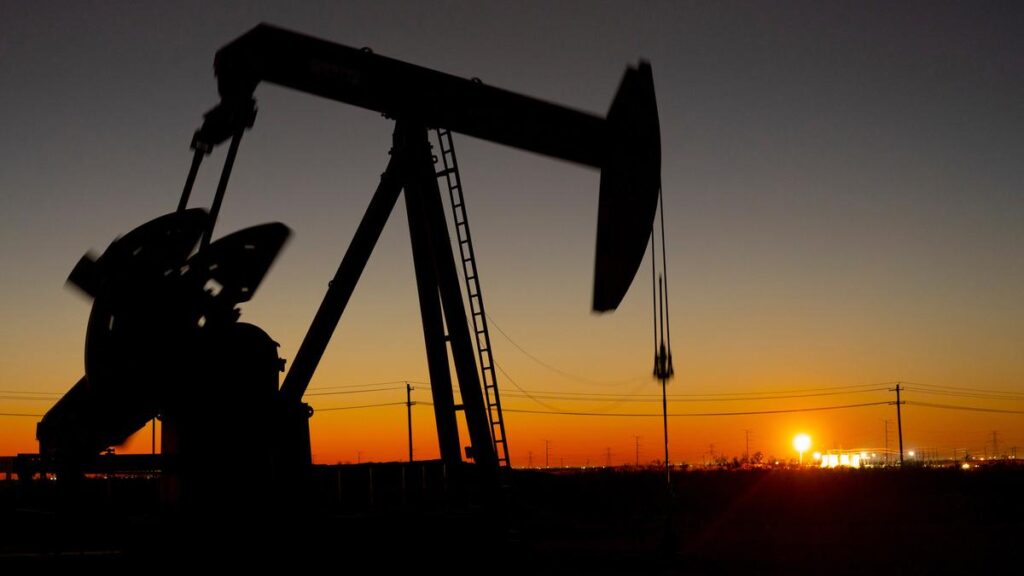International energy traders are braced for disruptions as Iran’s parliament endorsed the closure of the Strait of Hormuz, a crucial choke point for the world’s oil supply, with the ultimate decision resting with the country’s leadership, according to reports in Iranian state media on Sunday.
Any move to impede the flow of shipping traffic out of the Persian Gulf would probably lead to a spike in oil prices — and higher prices at the gas pump.
But how high they will go and for how long is an open question that depends largely on what happens around the Strait of Hormuz. About 20 per cent of the world’s oil and natural gas shipments pass through the narrow stretch of water between Iran to the north and Oman to the south.
Secretary of State Marco Rubio told Fox News on Sunday that it would be “economic suicide” and a “terrible mistake” for Iran to disrupt movement through the strait. He urged China, which depends heavily on oil and gas from the region, to pressure Iran to avoid that move.
“It would be, I think, a massive escalation that would merit a response, not just by us, but from others,” Rubio said.
After the US bombing of three of Iran’s nuclear facilities Saturday, Iranian Foreign Minister Abbas Araghchi said on Sunday that there would be “everlasting consequences” for an attack that he called “extremely dangerous, lawless and criminal behaviour”.
It remains unclear whether Iran will attempt such a blockade or use mines or missiles to interrupt the flow of commerce through the region.
Before the US bombed Iran, analysts were already warning that a closure of the strait could push oil prices well past $US100 a barrel. That would be more than a 30 per cent increase from where they stand today.
Analysts caution, however, that Iran is unlikely to deliver on the threat and note that the nation has vowed to close the strait in the past and never successfully done so.
Most of the oil that goes through the strait is delivered to Asia, and Iran is wary of alienating its ally China, in particular. Iran may also lack the firepower to successfully block the strait.
Regardless of what happens at the Strait of Hormuz, the instability in the region following the strikes will probably send oil prices surging – at least temporarily — as soon as international energy trading resumes late Sunday night.
“It’s likely there will be panic buying at the open,” said Denton Cinquegrana, chief oil analyst at OPIS, a Dow Jones company.
Meanwhile, Iran has been taking actions to interfere with energy shipments through the strait by other means, including jamming GPS signals of tankers in the area. The maritime intelligence firm Windward reports that 23 per cent of vessels in the area — some 1600 ships — experienced signal jamming on Sunday, up sharply from Friday, when 970 ships were impacted.
Such actions, however, are generally already factored into current oil prices, which remain in the mid-$US70s per barrel of oil.
A Windward spokesman said it was too early to say whether shipping patterns through the strait have already changed after the U.S. strikes.
As market watchers remains sceptical of Iran’s ability to shut down the strait, some are predicting that any price spikes for Americans will be short-lived.
“Crude oil will rise, but absent some decisive Iranian response, I would think prices will not hold their gains,” said Simon Lack, portfolio manager at the Catalyst Energy Infrastructure Fund.
“The US is energy independent so [it’s] less exposed to higher oil prices than most other countries.”
American officials have worried for decades about the vulnerability of the Strait of Hormuz. Over the years, the US has wound down its long-running reliance on Middle Eastern oil and grown into the world’s largest oil producer, now buying just a small percentage of its oil from the region.
Still, disruption of such a key shipping lane would reverberate throughout the world economy. If Iran defies expectations and manages to impose a blockade, prices could rise quickly.
JPMorgan analysts warned earlier this month that a full-blown military conflict and a closure of the strait could hike prices as high as $US130 per barrel. That would probably push prices at the pump in the U.S. up by more than $1 from where they are now.
The Washington Post
https://thewest.com.au/business/energy/what-the-us-strikes-on-iran-could-mean-for-world-oil-prices-c-19124103


